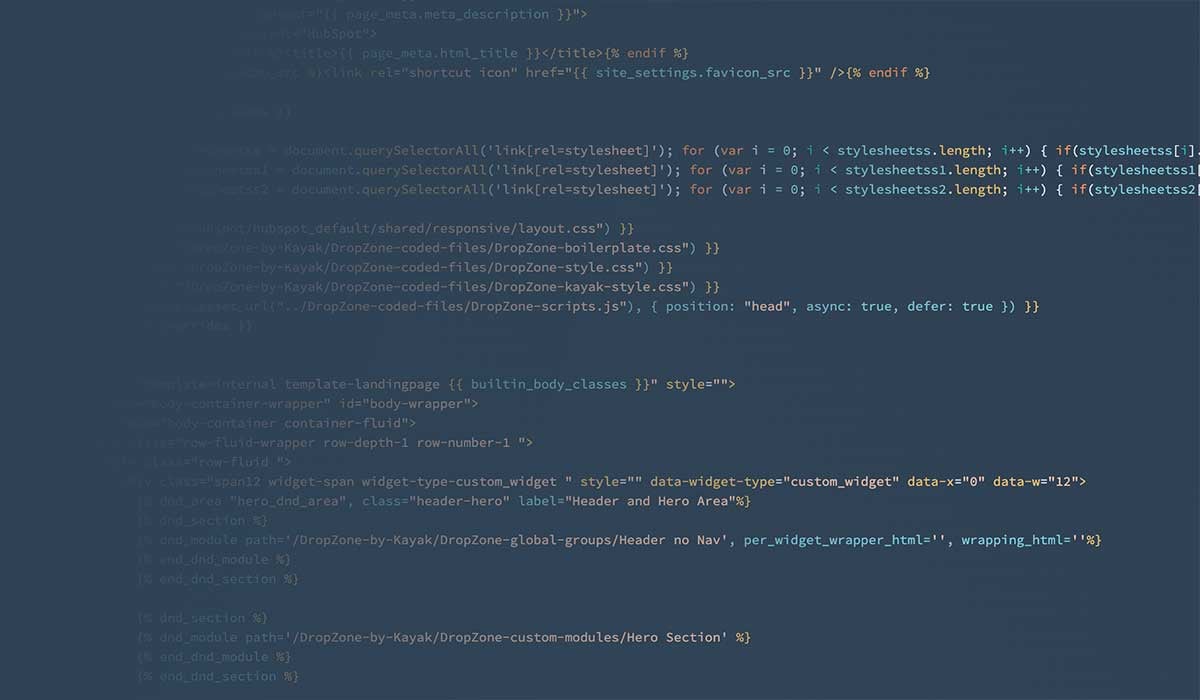
The debate between using no-code editors and custom-designed HTML templates has been around a few years. Both methods have their niches, catering to different audiences with different needs.
Understanding the strengths, limitations, and best-use cases for each is important. In this article, we'll look at both approaches to help you make an informed decision.
No-code editors have revolutionized the way we think about web development. Gone are the days when creating a website was a task reserved for developers. Today, with platforms like HubSpot and WordPress, anyone with a vision can bring a website to life. It's not because developers aren't needed...it's because developers have made page layouts accessible for marketers.
1. User-Friendly Interface: The primary allure of no-code platforms is their user-friendly interface. With intuitive drag-and-drop features, these editors eliminate the steep learning curve traditionally associated with website development. Features like drop zones further streamline the page design process, guiding users towards more cohesive designs.
2. Rapid Development: If you're looking to get a website up and running in record time, no-code editors are your best bet. With a number of modules at your disposal, you can configure a functional and aesthetically pleasing site in a matter of hours. What's possible is only limited by what modules are available and how you configure them.
3. Cost-Effective: For marketers who wish to manage a budget, a no-code approach can be one of the smartest decisions they can make. Commonly available on a subscription model, robust themes containing advanced modules are made accessible without the large initial investment commonly experienced with custom development.
No-code editors are not without their limitations. Just like most things, there are levels to this game. For starter levels, the very features that make them accessible can also be restrictive. The range of customization may be bound by the theme developer's business model. Professional level "developer" themes can be highly customizable, they just come in at a higher price point. As they say, we get what we pay for.
For those with enough budget and desire to develop, custom-designed templates offer a world of possibilities. Advertising agencies and individual designers utilize HTML as the foundation for their client websites. A completely other world from no-code approaches, the "code" approach offers very few limitations. If you can imagine it, it can probably be done.

1. Unparalleled Customization: With access to the source code, the sky's the limit. Every aspect of the website, from its design to its functionality, can be tailored to your exact specifications.
2. Unique Design: While no-code platforms offer a range of design options, there's always the risk of your website resembling another, especially at the starter end. With custom templates, such concerns are alleviated. With the right tweaks, your site will stand out from the crowd.
3. Applications: Many websites have applications built in. These websites do not sit on a platform like HubSpot, which itself is an App. We can't put an app inside an app. Coded websites are stand-alone.
The flexibility of custom-designed templates are custom manufactured. Maintenance, security or content updates, and troubleshooting can fall squarely on your developer's shoulders, limiting your ability to turn on a dime or seize an opportunity. Submitting a support ticket to an agency can get you expert support, but at a cost to budget and time. Plus, the initial design and development process can be costly and time-consuming, especially if extensive work is required.
Project Scope: For small to medium projects with a quick turnaround needs, no-code editors are ideal. For larger, more complex sites or those requiring custom-coded features, HTML templates might offer the depth and flexibility you need.
Technical Expertise: If you're a novice with no interest in the technicalities of website development, no-code platforms are a godsend. But, if you're comfortable with HTML, CSS, and perhaps a bit of JavaScript, or are willing to hire someone who is, custom templates provide fantastic flexibility.
Budget Considerations: No-code platforms, with their subscription models, can be cost-effective. Lower level features of no-code editors can be limited, more advanced features less so. Custom templates have incredible flexibility along with a much higher upfront cost (time and money).
Future-Proofing: Websites aren't static entities. As your needs evolve, your website will need to adapt. Custom-designed templates, with their inherent flexibility, can be more adaptable to future changes and expansions.
HubSpot CMS: Thankfully, HubSpot CMS supports both approaches. Customers can use the no-code website editor to work with custom templates created by a HubSpot Solutions Partner like Kayak Marketing.
Opting for a no-code editor or custom-designed HTML templates isn't about which is objectively better. It's about which is better for you. By understanding the strengths and limitations of each approach, you can choose a path that aligns with your vision, skills, and goals.
In a slightly biassed nutshell:
Whether you're looking for a quick solution to establish an online presence or aiming to craft a unique digital presentation, both approaches have the tools. The key is choosing a website option that meets your business goals first.
Kayak's DropZone Pro Theme for the Hubspot CMS utilizes master templates for branding, global styling, and headers/footers; Pre-configures Advanced Content Modules to design page layouts; and lets you modify them at the page level. It's a welcome custom website design experience executed in a fraction of the time and budget of a traditional website design or redesign project. Reach out to learn more.
Topics: Digital Strategy, Content Marketing, HubSpot CMS, All Articles